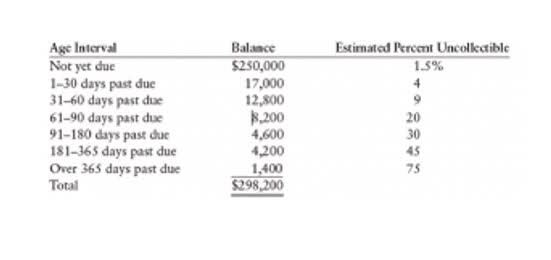Content

This will ensure your journal entries have additional eyes on them before they post; it can also be helpful if you’re out on a day that payroll journal entries need to be posted. When recording payroll, you’ll generally debit Gross Wage Expense, credit all of the liability accounts, and credit the cash account. Gross Wages will appear on your Profit and Loss or Income Statement, and the liability and cash accounts will be included on your Balance Sheet. You must also pay employer payroll taxes for your small business. These taxes include FUTA, SUTA and the employer’s share of FICA taxes. One way to double-check your math is to confirm that your employee and employer FICA tax amounts are equal.
Is payroll tax expense debit or credit?
Both the social security tax and the Medicare tax require matching by the company. Thus, to the extent of the matched amount, a company must debit a payroll tax expense account and credit a liability account.
Calculate the total of the employer contribution for Social Security and Medicare, state unemployment taxes and federal unemployment taxes. Create a journal entry to record the total payroll, including tax withholding. Debit the salary expense account for the total amount of the payroll. For example, if the total payroll for the period equals $43,000, debit “Salary Expense” for $43,000. Part of recording payroll distributions is recognizing the tax withholding and employer tax liability.
Primary Payroll Journal Entry
The first payroll journal entry mentioned above has been combined with debiting the payroll expense account along with crediting the payroll tax payable. In certain organizations, this may be two different entries. The credit to FICA Taxes Payable is equal to the amount withheld from the employees’ paychecks. The company can credit both its own and the employees’ FICA taxes to the same liability account, since both are payable at the same time to the same agency. When these liabilities are paid, the employer debits each of the liability accounts and credits Cash.
The next step is to move cash from the operating account to the payroll account in anticipation of all cash https://www.bookstime.com/ payments going out. We’ll move the sum of the above numbers excluding accrued vacation and sick time.

When you pay the employee, you no longer owe wages, so your liabilities decrease. Compare the amounts you entered to the information you have in your payroll reports.
Post Payroll Journal Entries to the General Ledger
Perfecting your payroll journal entries can help you avoid this fate. Here’s everything you need to know about maintaining proper payroll accounting and creating accurate payroll journal entries. This entry debits the various payroll tax expense accounts such as FICA and unemployment insurance and also credits the related payables. Payroll journal entries are used to record the compensation paid to employees. These entries are then incorporated into an entity’s financial statements through the general ledger. Payroll accounting is the recording and tracking of all payroll transactions.
What are the three basic types of payroll accounting?
Types of Payroll Accounting
There are three basic types. These comprise accrued wages, manual payments, and initial recordings.
Whether you debit or credit a payroll entry depends on the type of transaction made. The debits and credits in your books should always equal each other. Credit the cash account for the amount issued to the employees as net pay. This amount should equal the difference between the total salary amount debited to the salary account and the deductions credited to the taxes payable accounts and any other payroll deductions accounts. In the first journal entry, all payroll-related expenses are debited to the profit and loss account, and all payables are credited, representing a liability.
Check and revise your records
These transactions include paychecks distributed to employees, deductions and taxes withheld from employee paychecks, and employers’ share of benefit contributions and taxes. The income statement and the balance sheet are very important financial statements. The result was that several of its top executives went to jail, committed suicide, or died from heart attacks when the fraud was discovered. payroll accounting Its dire financial situation was revealed when Enron could not pay its expenses and current liabilities. Payroll journal entries are journal entries that are used to record employer-related compensation expenses and employee deductions. These journal entries ensure appropriate income statement and balance sheet entries. Income statements and balance sheets are key financial statements.
- You may need to have your accountant help you with this type of transaction.
- Since these accounts are both on the right-hand side of the assets equation, it’s mathematically correct to credit one and debit the other in equal amounts.
- The date assigned to the journal entry is based on the end of the pay period or on the pay date, depending on what is being recorded.
- Tips ARE NOT wages, and must be posted appropriately so that they are being accounted for.
- The matching principle requires the company to report all of its December expenses on its December financial statements.
- This type of payroll journaling is simpler than initial recording.
• State Unemployment Tax Act • Law that requires employers to pay employment taxes to individual states. The Vocab • Employee earnings are an operating expense and are often recorded in the Salaries Expense account. • Salaries Expense • The expense account used to record employees’ earnings. One component of the payroll taxes you deposit with the government is FICA tax . Manual payments are entries for when the company pays the employee manually, such as by check or cash. This usually occurs when the company needs to adjust an employee’s pay or when the company discharges an employee. Good payroll software will allow you to focus on other tasks while it does the dirty work behind the scenes making journal entries.
Add taxes paid towards 941 or 944 taxes
DRCRWagesXXEmployer TaxesXXWorkers’ Comp.XXPayroll Processing FeesXXPayroll ClearingXXWhen Funds are RemovedPayroll ClearingXXCashXXUsing a journal entry like the one above is simple and easy to follow. Memorize it in QuickBooks or go to the most recent entry and copy it. Setting up your journal entry and reconciling your payroll clearing account is a good way to stay on top of your largest expense and make paying payroll taxes seamless. A journal entry to a payroll clearing account is a journal entry that summarizes the total expenses that are included in all net payroll checks. In other words, this is an entry that helps you determine exactly how much you are paying out in payroll in a given period.
- It is quite common to have some amount of unpaid wages at the end of an accounting period, so you should accrue this expense .
- When you pay the full $1,000 balance on Dec. 3, you’ll clear the balance by debiting the account for $700.
- Once you’ve recorded your expenses and payables, check your entries to ensure that nothing is missing and that everything you entered is correct.
- The Credit section includes FICA taxes, state withholding taxes, federal withholding taxes, social security taxes, and Medicare taxes.
- Each journal entry has debits and credits that must add up to the same number.
To create payroll journal entries for these deductions, create a row for each type of tax titled “ payable.” Record each tax amount as a credit. Then, record the sum of these credits as a payroll tax debit.
Journal Entry to Record Accrued Vacation
The key to doing journal entries is to ensure that the total amount debited and credited is the same so that the general ledger will remain balanced. Payroll journal entries are typically done instantaneously by your payroll software, but we’ll go over them here with fictitious numbers to better understand how payroll works. When you actually go to deposit your tax payments, these payroll liabilities come off your books. As a small business owner, payroll accounting can be a headache.

Add the total number of debits and then add the total number of credits. Since such amounts are recorded in the expense account but yet to be paid in the liabilities section, the liabilities account would increase.
The cash account decreases, and wages are an expense account that decreases equity. While payroll records are mandated to be maintained by law, they are also extremely useful in assessing the nature and amount of expenses due to employees, who are the backbone of any organization. ‘Salaries’ is a line item that is debited to the profit and loss account, and therefore has an immediate impact on the financial statements. The employer must, therefore, exercise caution and vigilance while creating and maintaining payroll records. Where to Record the Tax Expense • The payroll taxes are recorded as business expenses in the Payroll Tax Expense account • The Payroll Tax Expense account is used to record the employer’s payroll taxes . Credit the “Cash” account for the total amount paid across all tax payable accounts. The credit posted to the cash account adjusts the balance to account for the cash reduction from the payment.
As we learned, payroll journal entries are used to record all payroll transactions of a business. These transactions include employer-related payroll expenses and employee deductions. Let’s continue with our example of the payroll for the hourly-paid employees. We’ll assume that the distributor’s accounting month and accounting year both end on Saturday, December 31. The matching principle requires the company to report all of its December expenses on its December financial statements. This means the company must report on its income statement the hourly wages and other payroll expenses that the company incurred through December 31. When these liabilities are paid, the employer debits each one and credits Cash.
Types of payroll accounting entries
Certain end-of-period adjustments must be made when you close your books. Adjusting entries are made at the end of an accounting period to account for items that don’t get recorded in your daily transactions. In a traditional accounting system, adjusting entries are made in a general journal. The example demonstrates how to calculate gross and net pay, make journal entries, and determine the impact on the income statement and balance sheet.

You also deduct FICA taxes, income taxes, the employees’ portion of benefit premiums, and wage garnishments from your workers’ paychecks. You must record these deductions as transactions in your general ledger. Your initial payroll entry may not cover all your wages, despite how comprehensive it appears. That’s because – in some cases – you’ll still have wages to pay after an accounting period closes. These entries show the amount of wages you owe to employees that have not yet been paid.